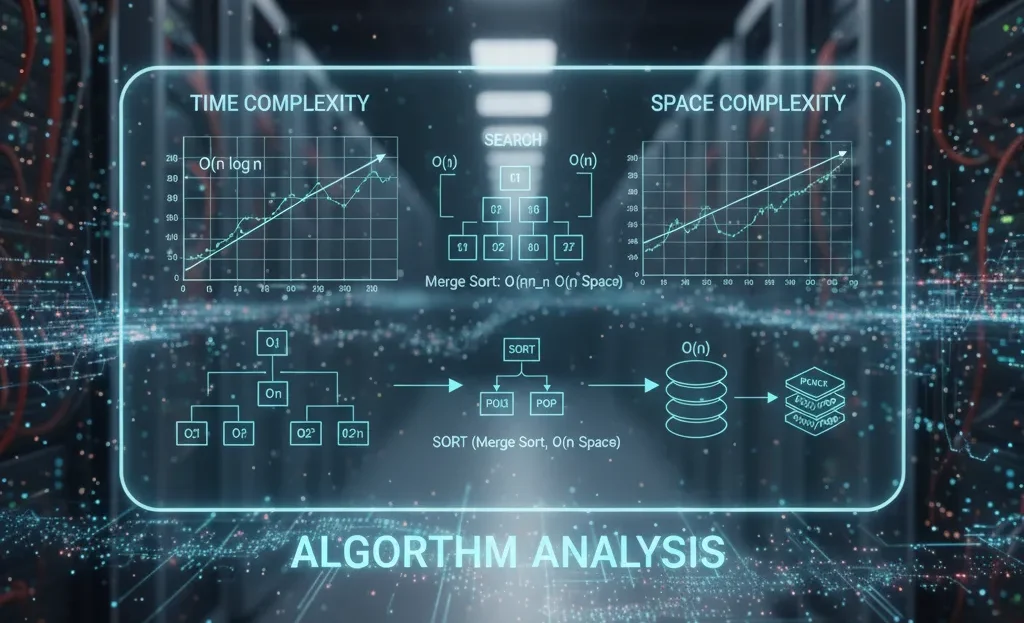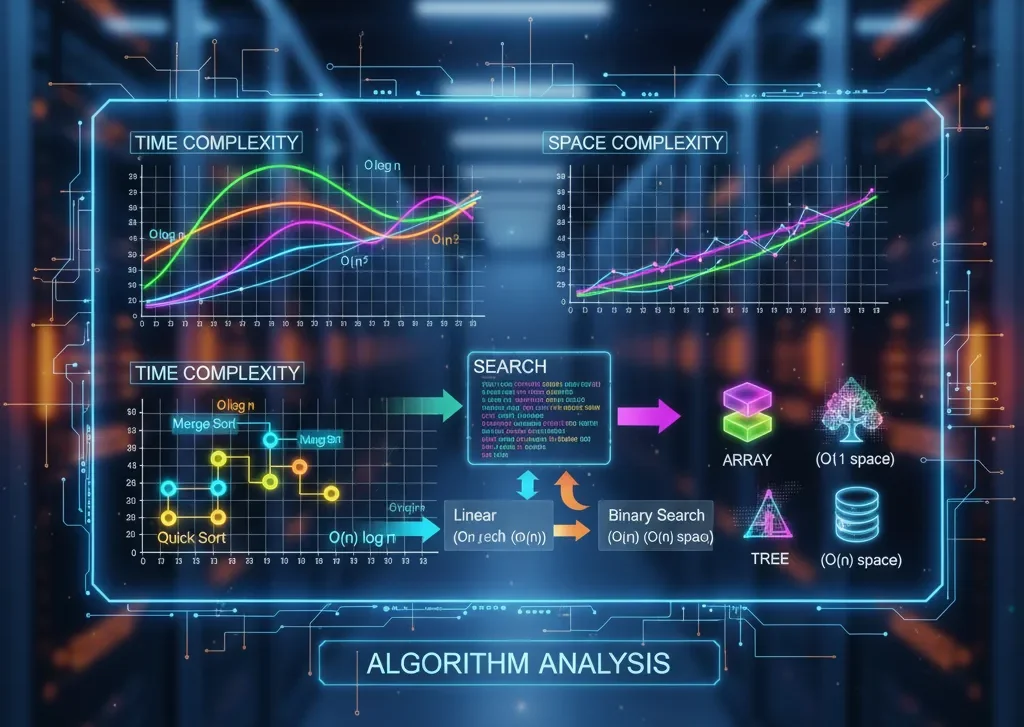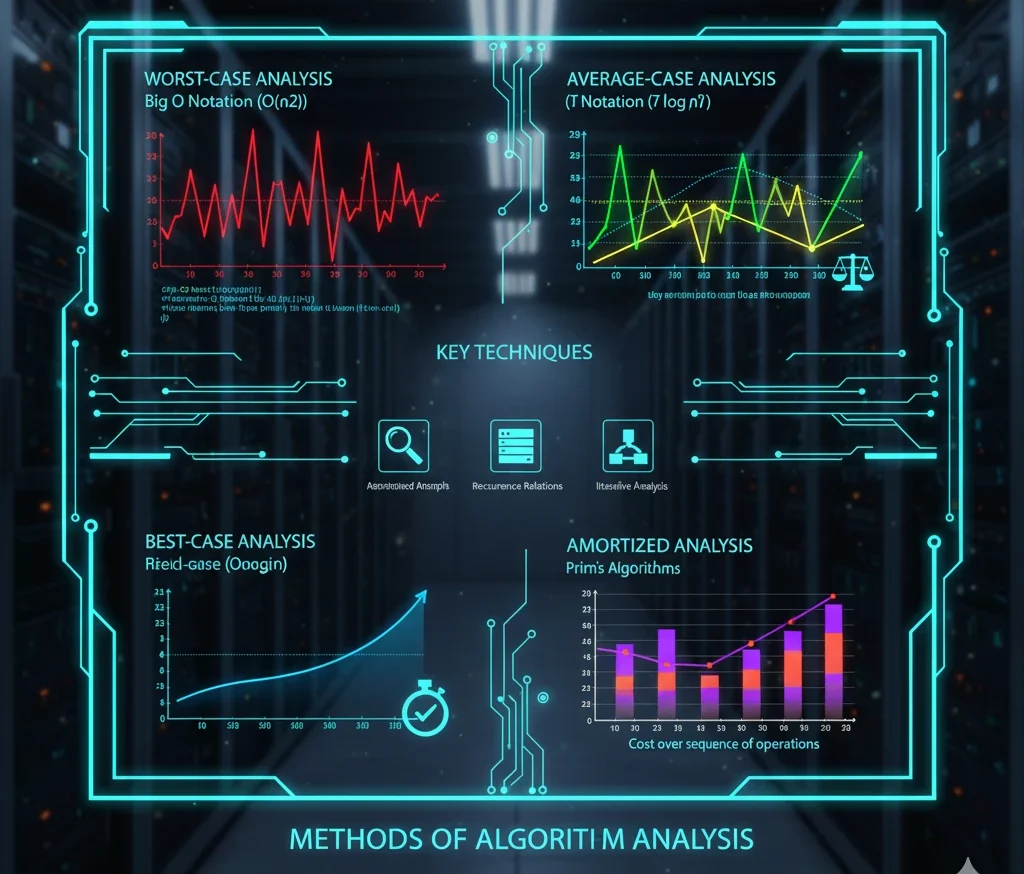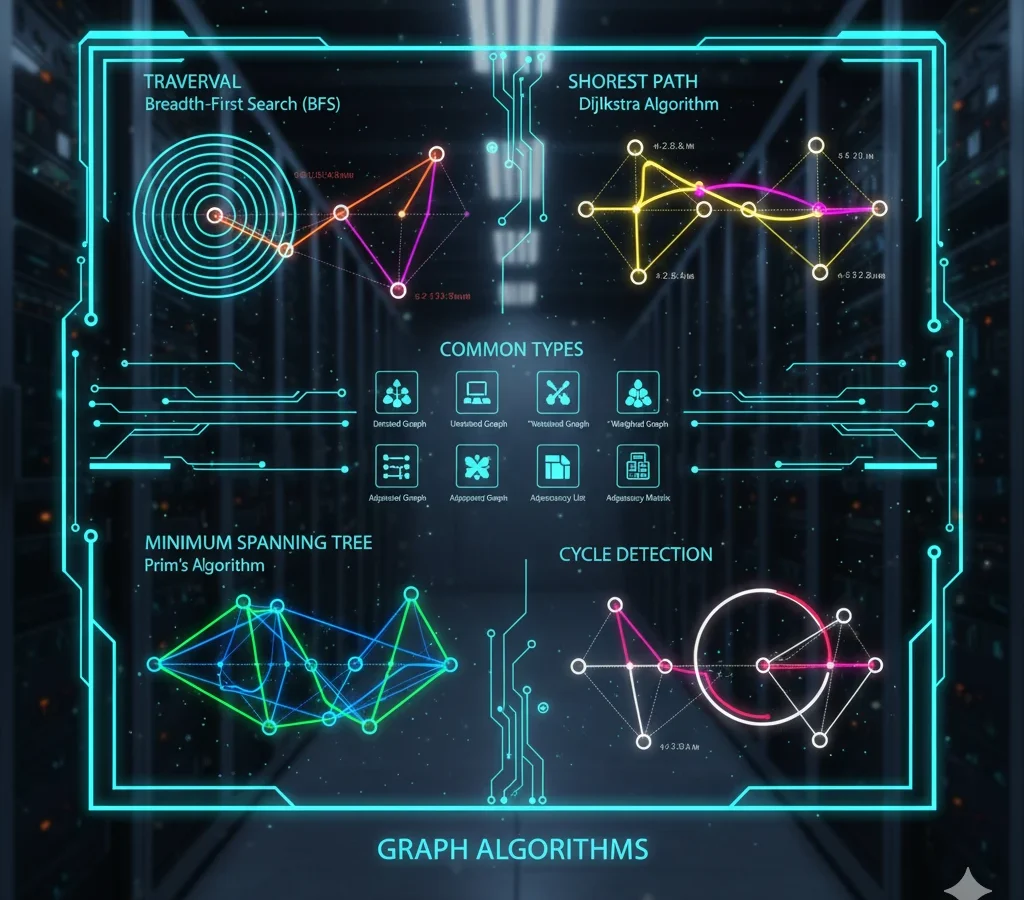Analysis of Algorithm in Data Structure

Introduction
The analysis of algorithm in data structure is a fundamental concept in computer science. Whenever we solve a problem using a data structure, we design an algorithm for it. But writing an algorithm is not enough—we also need to measure its efficiency. This measurement is called analysis of algorithm, and it helps us understand the performance of a program in terms of time and memory.
What is Analysis of Algorithm in Data Structure?
Analysis of algorithm in data structure means evaluating an algorithm based on the resources it consumes. The two major resources are:
- Time – How fast the algorithm runs.
- Space – How much memory the algorithm needs.
By analyzing these, we can compare different algorithms for the same problem and decide which one is more suitable.
For example, if we want to search an element in a list, we can use Linear Search or Binary Search. Both will give the correct answer, but Binary Search is faster when the data is sorted. This difference is visible only when we analyze their time complexity.

Need for Analysis of Algorithm
Analysis of algorithm in data structure is important because:
• It helps us predict the behavior of an algorithm before running it.
• It allows us to compare two or more algorithms solving the same problem.
• It ensures programs are efficient even with large inputs.
• It helps in selecting the right data structure and algorithm for real-world applications.
Without proper analysis, an algorithm may work for small data but fail when input size grows.
Methods of Analysis
There are three standard ways to analyze algorithms:
- Best Case Analysis – The minimum time taken by the algorithm.
Example: In linear search, if the element is found at the first position. - Worst Case Analysis – The maximum time taken by the algorithm.
Example: In linear search, if the element is at the last position or not found. - Average Case Analysis – The expected running time for a random input.
Example: In linear search, the element is somewhere in the middle on average.

Time complexity describes how the running time of an algorithm increases with the size of the input. It is expressed using mathematical notations like:
Time complexity describes how the running time of an algorithm increases with the size of the input. It is expressed using mathematical notations like:
- O(1) – Constant time (independent of input size).
- O(log n) – Logarithmic time (binary search).
- O(n log n) – Log-linear time (merge sort, quicksort).
- O(n²) – Quadratic time (bubble sort, selection sort).
- O(n) – Linear time (linear search).
These notations are the backbone of analysis of algorithm in data structure.
Space Complexity in Analysis
Space complexity refers to the amount of memory an algorithm requires to execute. It includes:
• Memory for variables.
• Memory for data structures.
• Memory for recursion or function calls.
For example, merge sort uses extra memory for merging arrays, while quicksort works mostly within the same array, making it more space efficient.
Examples in Data Structures
Searching:
• Linear Search → O(n)
• Binary Search → O(log n)
Sorting:
• Bubble Sort → O(n²)
• Merge Sort → O(n log n)
Tree Operations:
• Searching in Binary Search Tree → O(log n) in average case, O(n) in worst case.
Graph Algorithms:
• Breadth-First Search (BFS) → O(V + E) where V = vertices, E = edges.
These examples show how analysis of algorithm in data structure directly affects the performance of real applications.

Conclusion
The analysis of algorithm in data structure is essential for writing efficient programs. It helps us evaluate time complexity, space complexity, and compare different approaches for the same problem. Without analysis, we cannot ensure scalability and performance.
In computer science, a correct solution is not enough; it must also be efficient. That is why analysis of algorithm is always studied together with data structures.
Just like algorithms need proper analysis to perform efficiently, databases also rely on well-defined attributes in database to give meaning and structure to stored data.


One thought on “Analysis of Algorithm in Data Structure”